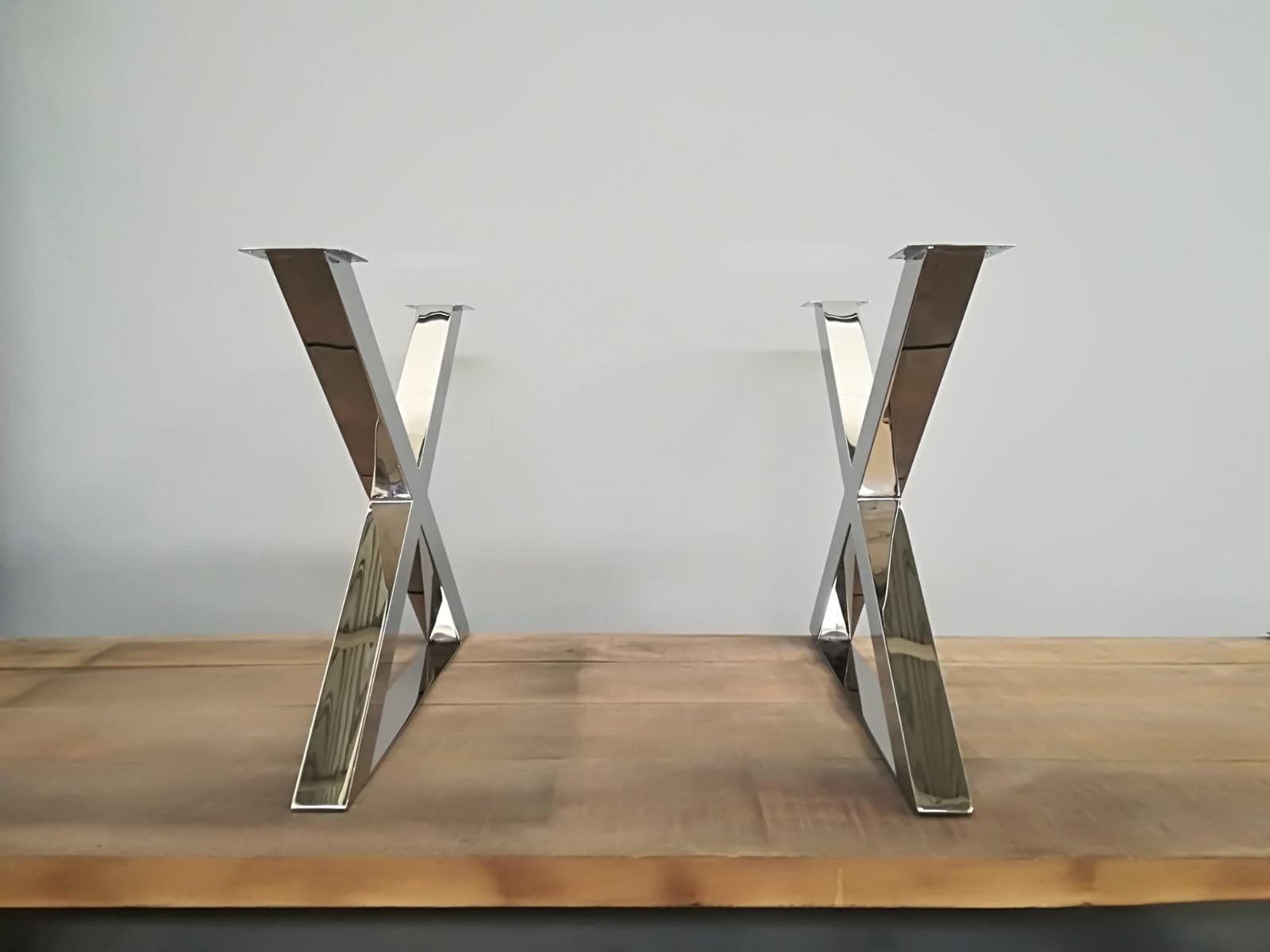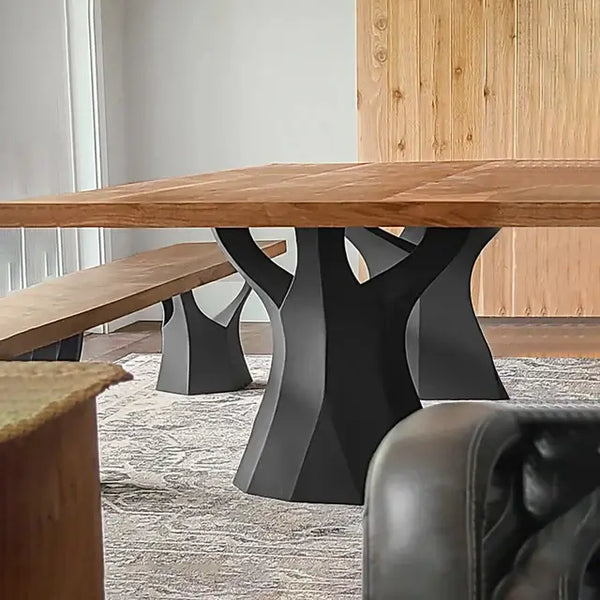How to Maintain and Care for Your Dining Room Table Legs
How to Maintain and Care for Your Dining Room Table Legs
Blog Article
From Conventional to Modern: Locate the Suitable Dining-room Table Legs for Your Style
While timeless designs such as cabriole and turned legs stimulate a sense of timeless class, modern designs like hairpin and geometric alternatives present a chance for striking aesthetic rate of interest. As you consider these aspects, the concern continues to be: how can you seamlessly incorporate these varied leg designs to create a harmonious eating experience?
Recognizing Table Leg Styles
The selection of eating area table leg styles can considerably influence both the appearances and capability of the room. Each leg design adds one-of-a-kind practical features and aesthetic elements, dealing with diverse style preferences and usage demands. Recognizing these designs is critical for picking the ideal dining table that aligns with your overall interior decoration vision.
For circumstances, tapered legs supply a clean, classic appearance that can enhance a space's style, while stand bases offer stability and take full advantage of legroom, making them optimal for smaller spaces. Barrette legs, a trademark of mid-century modern-day design, present an industrial flair, enabling a ventilated, open feeling. Likewise, trestle legs evoke rustic beauty, offering robust assistance and a feeling of timelessness.
Wooden legs can bring warmth and structure, whereas steel options commonly convey a smooth, modern vibe. Eventually, recognizing table leg styles is crucial for creating a cohesive dining location that reflects personal design while making certain practicality and comfort.
Traditional Table Leg Options
When choosing eating room table legs, conventional choices often embody ageless style and workmanship. These layouts mirror an abundant heritage and a commitment to quality, making them ideal for those that value traditional looks.
One of the most iconic conventional leg styles is the cabriole leg, defined by its elegant bent form. This layout frequently features decorative carvings and is most typically discovered in Queen Anne and Chippendale furniture. An additional preferred alternative is the transformed leg, which flaunts a collection of smooth, rounded shapes that give a timeless look while maintaining security.
Moreover, the straight leg, while straightforward, supplies a unadorned and durable structure that can blend seamlessly with a variety of tabletop designs. For those attracted to ornate outlining, claw-and-ball feet legs evoke a feeling of majesty and can function as a sensational centerpiece in any type of dining room.
Last but not least, pedestal bases, although not strictly legs, provide an alternative typical alternative that enables for sufficient legroom and can be wonderfully sculpted. Each of these standard leg styles adds to the total atmosphere of a dining-room, marrying feature with visual appeal.

Modern Table Leg Designs
Modern table leg layouts provide a diverse variety of designs that emphasize clean lines and find more information ingenious products. These styles commonly prioritize functionality while acting as striking focal factors within a dining room. Minimal aesthetic appeals are prevalent, with legs crafted from materials such as metal, glass, and crafted wood, which add to a modern and ventilated feel.
One popular design is the hairpin leg, defined by its slim, tapered framework that provides security without overwhelming the table top (dining room table legs). This design is usually located in mid-century modern-day furnishings and can easily match different table forms. An additional fad is the use of geometric shapes, where legs may take on angular or unbalanced kinds, including aesthetic passion and a touch of artistry

Blending Styles for Special Rooms
Usually, house owners look for to develop special eating areas that mirror their individual style by blending numerous layout components. This method permits the incorporation of diverse appearances, resulting in an unified yet distinct atmosphere. Combining a rustic wooden table with sleek, modern-day steel legs can produce an eye-catching comparison that raises the space's general appeal.
Furthermore, integrating vintage table legs with modern tabletops can stimulate a feeling of history while keeping a modern perceptiveness. Such mixes not just showcase private taste yet also encourage creativity, allowing house owners to curate an area that really feels both personal and welcoming.
Shade plays an essential function in this mixing process; selecting table legs that enhance or comparison with the existing shade scheme can enhance visual rate of interest. Whitewashed legs can soften the daring of a dark table surface area, producing a balanced aesthetic.
Tips for Choosing the Right Legs
Selecting the right table legs is crucial for attaining both performance and aesthetic appeal in your eating area. Begin by considering the total design of your area. Standard setups take advantage of legs that feature detailed makings or transformed styles, while contemporary rooms may ask for sleek, minimal styles.
Next, assess the elevation and security of the legs. dining room table legs. Basic dining tables range between 28 to 30 inches in elevation, so make certain the legs match this measurement for comfort. In addition, robust products, such as hardwood or metal, can boost stability and longevity
Review the leg shape also-- alternatives include straight, tapered, or pedestal styles. Straight legs offer a traditional look, while conical legs can add a touch of elegance. Pedestal bases supply ample legroom and are perfect for smaller sized rooms.
Conclusion
In recap, choosing the optimal dining room table legs calls for cautious consideration of both modern and standard styles. By harmonizing leg design, height, and product with the general décor, a cohesive and welcoming environment can be achieved.
The selection of dining area table leg designs can substantially influence both the visual appeals and capability of the area. Ultimately, comprehending table leg designs is vital for creating a natural eating area that mirrors individual style while making certain functionality and convenience.One of the most iconic standard leg styles is the cabriole leg, identified by its elegant curved shape. Straight legs use a timeless appearance, while tapered legs can include a touch of beauty.In recap, selecting the excellent dining area table legs requires cautious consideration of both contemporary and typical styles.
Report this page